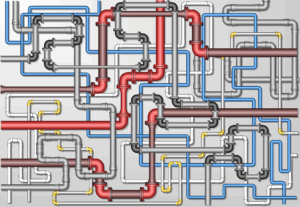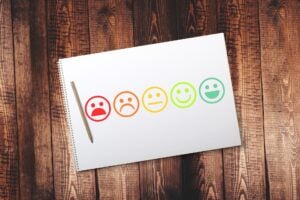Developments for a Livable Climate
What is net zero? According to the United Nations Climate Action page, “Put simply, net zero means cutting carbon emissions to a small amount of residual emissions that can be absorbed and durably stored by nature and other carbon dioxide removal measures, leaving zero in the atmosphere.”
The importance of net zero as a goal cannot be overstated. The UN notes, “The science shows clearly that in order to avert the worst impacts of climate change and preserve a livable planet, global temperature increase needs to be limited to 1.5°C above pre-industrial levels. Currently, the Earth is already about 1.1°C warmer than it was in the late 1800s, and emissions continue to rise. To keep global warming to no more than 1.5°C – as called for in the Paris Agreement – emissions need to be reduced by 45% by 2030 and reach net zero by 2050.”
Reaching this goal by 2050 is ambitious. While a range of alliances and treaties have been developed, such as the Paris Agreement, estimates are that governments are falling short of their commitments to Net Zero. “Getting to net zero requires all governments – first and foremost the biggest emitters – to significantly strengthen their Nationally Determined Contributions (NDCs) and take bold, immediate steps towards reducing emissions now,” the UN report states.
So how does this fit in with innovation? Clearly, developed and non-developed countries, governments, and the private sector will all have to do their part to achieve Net Zero goals. It is a global effort, that “calls for nothing less than a complete transformation of how we produce, consume, and move about,” the UN says. According to the report, the energy sector is the source of around three-quarters of greenhouse gas emissions today and holds the key to averting the worst effects of climate change. Replacing polluting coal, gas and oil-fired power with energy from renewable sources, such as wind or solar, would dramatically reduce carbon emissions.
This opens a wide range of opportunities in the energy industry and a wide swath of related sectors, for research, development and innovations in the field of reducing carbon emissions to net zero. Already, this is a burgeoning sector that calls for no less than the transformation of how we consume energy.
Attend FEI 2024
Looking forward to FEI 2024? The conference, which will be held June 10 to 12, will feature the session, “Corporate Changemaker Challenge: Shortening Net Zero Emissions Mandate Deadlines,” presented by Jhansi Kandasamy, Net Zero Program Director, Idaho National Laboratory. Operating an organization that’s almost the size of Rhode Island, with all of the aspects of an operating city, is a tall order. Ensuring that the organization reaches net zero emissions in less than seven years is an even tougher task. That said, Kandasamy has identified the areas of concern and is orchestrating a plan of attack on all fronts to achieve Net Zero by 2031. Take back some lessons learned on how your organization can perhaps beat the deadline for your current net zero emissions mandate. Register for FEI 2024 here.
FEI 2024 Net Zero Emissions Competition Finalists
With innovation so closely connected to cutting carbon emissions, it seemed to be a natural fit this year to recognize innovators in the field. FEI will be holding the final round of its Net Zero Emissions Competition at this year’s innovation event. All Things Innovation is pleased to reveal the 10 finalists of the contest, who will be competing for the first-place prize ($25,000) at this year’s FEI, to be held June 10-12, 2024.
Wastewater treatment is expensive, troublesome, and toxic. The status quo to remediate wastewater typically includes fiscally inexpensive treatment methods that have high environmental costs due to the use of harsh chemicals, which leach into the groundwater and surface streams. However, greener methods are fiscally expensive to set up and operate and require five to ten times the energy and labor compared to standard treatments. To address these points, we are proposing the use of engineered microorganisms to remediate toxic contaminants from water. We have genetically engineered yeast to capture heavy metals, including lead, arsenic, and mercury, from various water sources.
Carbon Negative Solutions is a platform company using proprietary AI to develop and commercialize carbon negative concrete & concrete products, the most produced material in the world. Our leading product is carbon negative supplementary cementitious materials (SCMs) that are up-cycled from zero-value waste streams resulting in a product that is cleaner, cost less to produce, and replaces more cement (>50%) than traditional SCMs.
EcoForge aims to tackle the construction industry’s 39% CO2 emissions with innovative hemp-based ceiling tiles. These tiles are eco-friendly, non-toxic, and improve building safety and comfort. The unique hemp species creates stronger, cost-effective solutions, supporting a greener planet.
The company uses special microorganisms for direct electricity generation in battery and decarbonization.
According to the company, 40% of new consumer products fail or underperform, with 80% of development costs locked in early, leading to 4B tons of landfill waste, 27M tons of CO2 (only for return transports!), and $810B lost revenue – numbers that have been dramatically rising over the last decades. In response to this pressing challenge, product managers and designers are searching for ways to make better informed design decisions. Ada IQ, an AI research company, improves the product development process with ProductGPT. It provides a holistic perspective on how consumers feel about specific product features, from SKU to market segment. It automatically draws insights from millions of data points across different sources to uniquely identify consumer needs and validate designs, before prototyping. Product managers and designers can leverage insights in real-time for both existing and new designs to make better decisions, faster. ProductGPT uses patent-pending AI models that have been rigorously validated over four years of academic research to analyze and predict consumer needs on current and future products. Our technology is pioneering the first solution to offer a data efficient way to evaluate and validate new design concepts based on customer opinions. It is said to reduce the time for deep product analysis by over 90%.
The global water crisis and the fight against climate change demand transformative solutions. Desalination and reliance on over-stressed water sources are unsustainable, both environmentally and economically. PiKARE’s revolutionary AWEG technology disrupts the status quo. We extract clean water directly from the air and generate surplus energy with our patented system. Imagine a solution that not only produces clean water, but also generates up to 120 kWh of clean electricity per day for a 2-ton unit – all with zero waste and a negative carbon footprint. AWEG empowers off-grid communities or enables industries to achieve both water and sustainability targets. We’re not just creating a new product; we’re transforming how communities, industries, and even governments access water. With PiKARE, the future is decentralized water production, promoting resilience and combating climate change.
Aclymate educates and empowers small and mid-size businesses to measure, reduce, report, and offset their climate footprint at an affordable price and without requiring expertise. We connect to the data systems our customers already have to provide them a full-scope carbon accounting through a SaaS solution. For those that need extra help, we offer an integrated carbon bookkeeping service and for companies that are looking to offset, Aclymate offers the largest selection of offsets available on the web. We’re founded by climate experts who have both led carbon companies previously, advised the U.S. Climate Alliance on policy and markets, and developed the largest offset reforestation project in U.S. history.
Esger’s AI automates the desktop due diligence process for companies’ suppliers. Our AI performs audit reviews against companies’ own code of conducts in under three minutes, assigns sustainability risk scores for suppliers, generates Corrective Action Plans, and presents aggregate trends and granular insights from real audit data. Using our AI, customers have reduced the amount of time spent on desktop due diligence from up to15 hours to 10-15 mins.
HyWatts’ power-plant-in-a-box delivers reliable zero-emission energy anywhere for power-intensive businesses at as low as half the price of electricity from utility companies by combining on-site solar energy production with our breakthrough energy storage technology. We address the needs of the rapidly electrifying economy, with growing demand for EVs, data centers, crypto mining, and other power-intensive industries driving the need for more power.
A Global Effort in the Race to Zero
The UN notes that more than 140 countries, including the biggest polluters – China, the United States, India and the European Union – have set a net-zero target, covering about 88% of global emissions. More than 9,000 companies, over 1,000 cities, more than 1,000 educational institutions, and over 600 financial institutions have joined the Race to Zero, pledging to take rigorous, immediate action to halve global emissions by 2030.
Will it be enough? The race to reduce global warming has started, and to be sure innovators—including the finalists listed here and those not yet recognized—are sure to play a key role in the Race to Zero.
Contributor
-

Matthew Kramer is the Digital Editor for All Things Insights & All Things Innovation. He has over 20 years of experience working in publishing and media companies, on a variety of business-to-business publications, websites and trade shows.
View all posts


























































